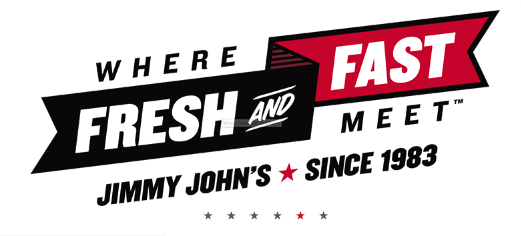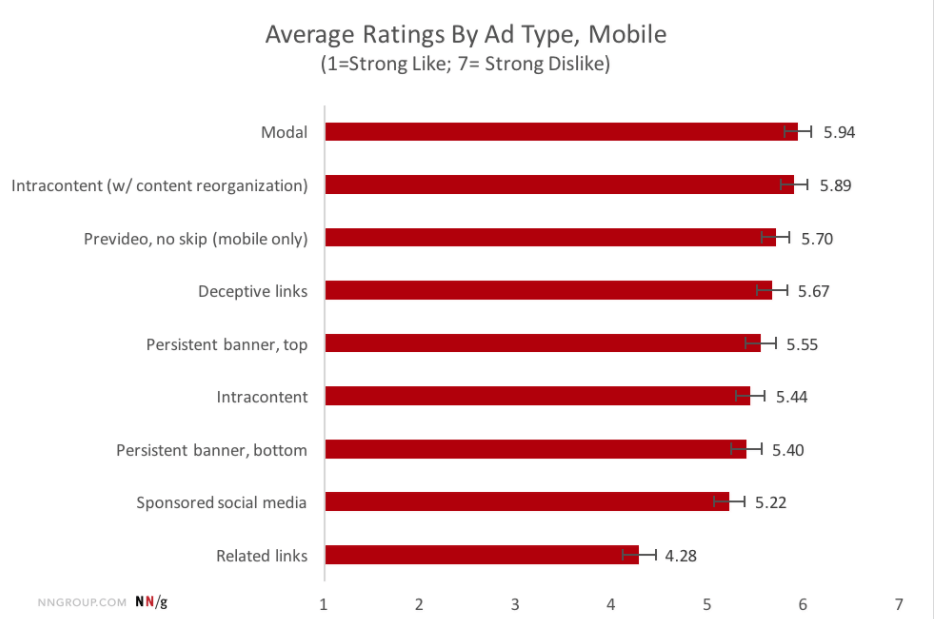
How to Make Your Marketing Support User Goals and Boost Conversions
The easier you can make the journey from ‘just shopping’ to ‘ready to buy,’ the more sales you’ll make online. Here's how to do just that.
Acting as if online selling takes continuous marketing is a primary mistake ecommerce managers tend to make. Website user goals aren’t any different than offline customer goals.
For instance, let’s say you walk into a local deli to get a roast beef sandwich. You’re on your lunch break, and you’re starved.
You want a sandwich.
The clerk says, “Come on in, we have the best food in town.”
“Great, I’ll take a roast beef sandwich on whole grain bread.”
“We use nothing but the best meat too. It’s grass-fed Angus.”
“Wonderful, could I get a sandwich?”
“We source our Vidalia onions straight from Georgia, and the mustard is organic…”
How long would you hang around at the counter, trying to place an order, if the clerk wouldn’t shut up and start getting your meal prepared?
The same thing happens online.
Many of your visitors are anxious to find what they’re looking for, get the order placed, and get on with life. Your job is to help them do that and stay out of the way.
The easier you can make the journey from ‘just shopping’ to ‘ready to buy,’ the more sales you’ll make online. Conversion rate optimization (CRO) is concerned with helping those visitors take the next step towards buying.
The easier you make the journey from ‘just shopping’ to ‘ready to buy,’ the more sales you’ll make. Share on XLet’s look at best-practice tips on how to do that.

Don’t Forget the Difference Between Marketing and Sales
Even though you’ll often see ‘Sales and Marketing’ as the department identifier, marketing comes first on the customer journey.
Here’s a simple way to view the two: Marketing attracts prospects to the offer, then sales helps those potential buyers take ownership and become paying customers.
Problems occur when the transition from marketing to sales is confusing or obstructive. Conversion rate optimization is grease for the wheels of ecommerce. It enables the marketing to sales movement and makes it more efficient.
We’ve sometimes said that marketing has won once a prospect lands on your website. That doesn’t mean the marketing job is over, though. There’s still support work to accomplish, but it’s critical that those marketing tasks are performed in the right place at the right time.
Website user goals must take primary position. When you help people get what they want, they’ll keep coming back for more.
When you help people get what they want, they’ll keep coming back for more. Share on XLet’s look at the primary places where marketing best supports user goals – thereby helping boost the conversion rate and increase sales.
7 Places Where Marketing Supports User Goals
There are few things as annoying as pop-up forms that prevent you from reading an article or performing a task online – without first attending to the pop-up.
A close second may be photobombers. You know, those hilarious individuals who get their kicks from finding someone attempting to get a special photo, then inserting themselves into the background in an attempt to spoil the shot.
Both are prime examples of out-of-control marketing. The first attempts to force you to make a hasty decision, and the second can’t quite get over not being the perpetual center of everyone’s attention.
First, watch this brief clip. It illustrates the concept beautifully: Your Site as a Store.
Don’t let your marketing kill your sales. The brief clip (see above) drives that point home.
These following examples highlight places where marketing supports website user goals and adds value to the sales process. They bring additional clarity the point.
- Marketing can help highlight a current or upcoming sale. Promoting an event is a primary job of marketing. Just be sure that each page of your website maintains its own primary purpose in the sales process. You don’t want to turn a product page into a sales announcement, but you can certainly send people to a separate sales announcement page from a product page.
- High-quality photography can provide real value to the prospect. There’s an eternal battle between writers and designers over whether the words or the graphics are most important. The truth is that the prospect is most important and whatever helps that person the most is the best use of the space. Make sure your photos are there for a reason. Always ask, “How does this image help the visitor accomplish user goals and make the best decision?”
- Relevant videos can highlight products and services. There’s nothing quite like seeing something taken down from the shelf and put into action. That new ski design looks and sounds intriguing in the sales copy and photographs, but show someone carving tracks down the slope with them and the mood can move from intriguing to exciting. Here again, don’t try to be cute or artistic – simply aim to be helpful by keeping user goals in mind.
- Copywriting should resonate with customer needs and stay focused. Read the copy aloud and ask one question: “Do I feel like something is being hyped and pushed on me, or do I feel better informed and more able to make a decision because of the copy?” Even veteran copywriters can get off course and start to push more than they pull. Great copy attracts the attention of the right prospects, then helps those prospects learn what they need to learn in order to become buyers.
- Good timing requires the right placement. Timing is everything in sales. If a person is hungry enough, you no longer need to ‘sell the sizzle.’ You need to ask for the order. Always include a call to action where and when appropriate. An example is the cart abandonment email. Someone who comes to your website, looks around, and leaves may need extra help or incentive. We’ve seen impressive results when ‘saves’ are conducted appropriately.
- Follow up with email messages to build the relationship. This is especially true of cart abandonment. By making sure to collect email addresses during checkout, you can remind prospects about a waiting cart and begin finding out why they didn’t stay to complete the purchase. You should also include well-considered marketing messages in shipping notifications and other transactional email communications.
- Product details and relative products or services are prime spots for marketing. If you remember to lead with a consideration of website user goals, you can combine marketing and good service. When the cashier asks, “Do you want fries with that?” the upsell is obvious, but the suggestion is most often received as a quick reminder before finalizing the order. Always keep cross-selling and upselling in mind. Don’t make it central to the information, but make it available to those who want more. Even lists of dimensional specifications and sizing charts provide marketing opportunities. Educated prospects are happier owners.
That’s by no means an exhaustive list of where marketing can support ecommerce website user goals, but it should serve to illustrate the principles behind blending marketing, sales, and conversion rate optimization.
In contrast, let’s now consider three places where marketing is out-of-bounds.

3 Places Where Marketing Can Obstruct User Goals
Marketing makes sure the right prospects are aware of your offers, sales helps those prospects own the offers, and conversion rate optimization makes sure the marketing-to-sales transition occurs smoothly.
Anything that obstructs the process hurts your brand and restricts sales. Here are three examples of times and places where marketing should take a back seat and keep quiet.
- Marketing should not get in between the prospect and the product. If you didn’t watch this yet, watch it now. If you did watch it before, watch it again. The lesson here is huge: Your Site as a Store. Always be helpful; never be obnoxious. Use targeted marketing tactics aimed entirely at helping the prospect better understand your products or services and determine whether or not they are the solution to a problem the prospect needs to solve. The closer the prospect is to buying, the more your messaging needs to be consultation instead of presentation.
- Marketing should not confuse the issue at hand. Every page on your ecommerce site should have one purpose. Any visitor landing on that page should easily be able to determine exactly what that purpose is and what to do next. Marketing should support, but never obscure the goal of the page. We mentioned this earlier – in relation to special sales events – but it applies across the board.
- Marketing shouldn’t dress like a carnival barker. Unless your brand image dictates otherwise, marketing needs to look a whole lot more like customer service than it looks like sales. That’s not because we want you to somehow trick prospects into becoming buyers, but because helping accomplish user goals is the direct path to more sales. Your aim isn’t to reach the most people, it’s to reach the right people. You don’t need a megaphone, you need hearing aids to help you listen to prospects and take care of their needs.
There you have it. Seven should and three should-nots. Use them to evaluate your current ecommerce site. Start with your highest-visited pages and work down through the entire site. Does your marketing help clarify the customer journey, or does it create confusion? Ask friends to tour the site and provide feedback. Enlist other users. Test for effectiveness. Time invested here pays off over and over again.
Make Sure Your Marketing Supports User Goals
Marketing is meant to attract prospects to your ecommerce website. Poorly planned marketing has the opposite effect; it drives visitors away.
Use your marketing to reduce friction and make it easier for prospects to become customers. Conversion rate optimization techniques provide the grease for the rails.
Use your marketing to reduce friction and make it easier for prospects to become customers. Share on XDone right, marketing makes the sales job almost as easy as asking for the order and providing a simple, easy way for the transaction to take place.
Marketing, Sales, and Conversion Rate Optimization – getting those straight is the direct path to ecommerce success.
Resources:
- Why Your Brand Story Is Killing Conversions
- How to Get More From Your Transactional Emails
- Consumer Experience Optimization: The Root of Conversions
- Conversion Rate Optimization Essentials: The Master Guide

About the Author
David Hoos
David Hoos is the former Director of Marketing at The Good and a trusted advisor to marketing experts.